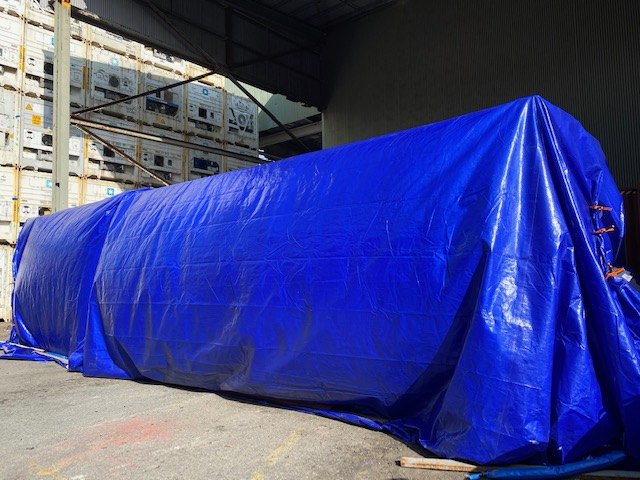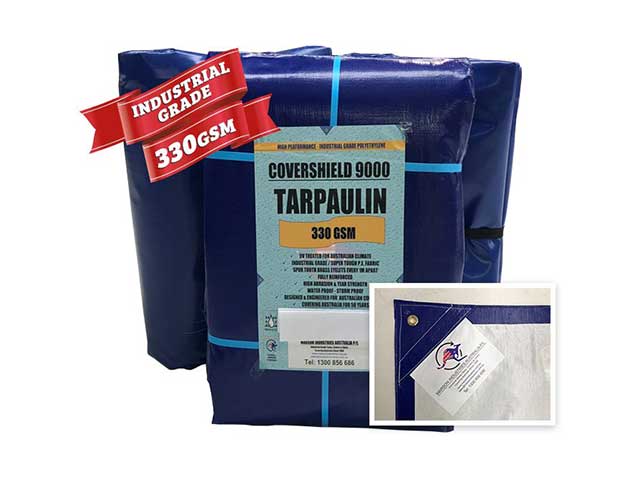Tarps, Covers & Liners. Industrial Textile Fabrication.

A tarpaulin is used for a variety of different purposes, primarily due to its size and ability to resist water. Also referred to as a tarp in many countries, it is a waterproof material that can be made of polyurethane or plastic, making it possible to cover many different things including wood piles, motor vehicles, or used as a makeshift tent when camping. There is another material that they are made of which is canvas, and there are several reasons why this is a good choice. This article will address using canvas for tarpaulin, and why this might be the best thing for you to use for a particular project you have in mind.
- Origins Of The Tarpaulin
As you would imagine, tarps were actually designed for the purpose of providing some type of cover for things that should not get wet. Sailors would use these tarps to cover the merchandise that was being shipped overseas. Today, trucks can be seen driving down the road with expensive merchandise, fully covered in secured with tarpaulins that are designed for a significant amount of rainfall. There are many different uses for them, as well as different types, that we will now present.
- Different Uses For The Tarpaulin
In general, they are used for the purpose of covering merchandise, people, or even physical structures. If you have seen someone doing a roofing job, and it is going to rain, these tarps are pulled out over the top of the home and secured until the storm passes by. At baseball games, tennis matches, and many other sporting events, these are usually pulled out very quickly to prevent the grass from becoming saturated.
In areas where the climate can be extremely cold, you will see them on top of wood piles, protecting the dry wood from becoming saturated by the rain and snow. In certain professions, such as painting, they are typically placed on the ground prior to painting the walls and ceilings of any given room. These are some of the uses for tarpaulins, and each one must be made of a certain material so that the job can be accomplished properly.
- Different Types Of Tarpaulins
Tarps can be classified based upon the type of material that they are made of. Three of the most popular materials include vinyl, polyethylene, and canvas. They are also distinguished by the thickness of the tarp, typically calibrated in millimeters, and can be referenced as either regular, heavy or superheavy duty in regard to these dimensions. Tarps typically have grommets, which are the holes that are on the edges where lines or ropes are fed through so they can be tied down.
The grommets strength is designated as simple or reinforced, with reinforced being the most durable of the two. Tarpaulins can also be designated by size, which is how most consumers typically choose the ones that they want. This is determined by the width and length of the tarps, and although the size is clearly printed on the packaging, they are typically smaller than advertised on the outside package.
They also come in many different colors, and the colors are also representative of the type of tarp that you are purchasing. For example, regular tarps include those that are silver, black, green or blue, and even the grommets can be made of different materials including aluminum and stainless steel. Finally, the distance that each grommet is spaced on the edges of the tarp is also indicative of the type of tarp that you have purchased. If they are closer together, they are typically used for industrial jobs, giving more security when they are tied down.
- Different Types Of Material
Tarps are made of four different types of material. For example, if you are purchasing a tarp tent, they are made of silnylon. The most common materials, however, are polyethylene, vinyl and canvas, each one used for different purposes. Polyethylene tarps are a laminate of sheet material, inside of which is polyethylene plastic. It almost looks like a fabric, as it appears to be woven together, allowing them to resist splitting when stretched.
Some of them are treated so that they can handle exposure to UV light, allowing them to not become brittle or lose strength over the years. Vinyl tarps are yellow in color, and are regarded as a super heavy-duty type of tarp, used for industrial projects. They are coated to become waterproof, and they also have a very high abrasion resistance. They can handle many problems that may arise including mildew, grease, oil and even acid, and are typically used with industrial transportation, construction and also in agriculture.
Finally, there are canvas tarps which are actually not 100% waterproof. They are simply water resistant. These are not the best choice if you are going to go camping, or if you want to prevent water from getting into your woodpile. Therefore, using Canvas for tarpaulin related projects may not be the best choice if preventing mildew and saturation is what you have in mind. They are typically the least expensive of all of them, and can be used for temporary purposes, preferably in less inclement climates.
Now that you have a basic understanding of tarpaulins, the different materials that they are made of, and what each type of tarpaulin is used for, you can make a choice when you go to the store when purchasing a tarp that you need for a project that is coming up. As mentioned earlier, if you are wanting to prevent any type of moisture from getting under the tarp, it is not recommended using canvas for tarpaulin.
Instead, you will probably want to choose a more heavy-duty type of tarp, those that are green, silver or brown in color. These are the thickest, can handle most projects, and will certainly prevent moisture from penetrating the tarp and getting into what you are trying to protect. However, if cost is an issue, and you simply need to cover something temporarily that can become slightly moist, using canvas for tarpaulin will be the most cost-effective choice you can make.
Share this post



